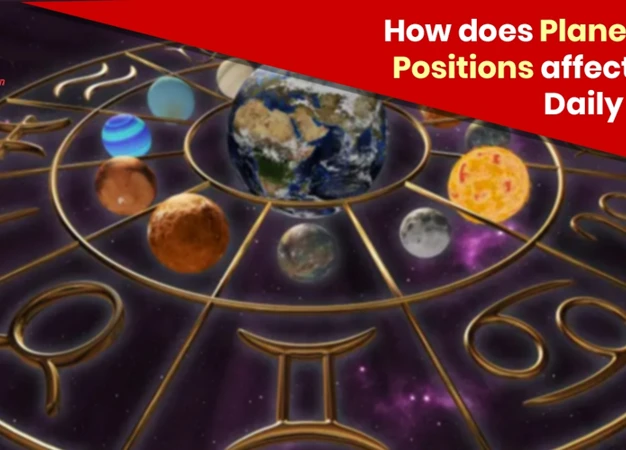Astrology has long fascinated humans, offering insights into our personalities, relationships, and life events. At the heart of astrology is the interpretation of celestial phenomena, particularly the alignments of planets. These alignments hold significant power and influence over our lives, shaping the energies we experience and the challenges we face. By understanding how planetary alignments impact astrological interpretations, we can gain a deeper understanding of ourselves and the world around us. In this article, we will explore the foundations of astrology, the role of planetary alignments, and delve into case studies to illustrate their effects. Let’s embark on this cosmic journey and unravel the mysteries of how planetary alignments shape our astrological interpretations.
Contents
- Understanding Astrological Interpretations
- Impact of Planetary Alignments on Interpretations
- Case Studies: Examples of Planetary Alignments
- Working with Planetary Alignments
- Conclusion
-
Frequently Asked Questions
- 1. What is the difference between astrology and astronomy?
- 2. Can astrology predict the future?
- 3. Are all astrologers the same?
- 4. How accurate is astrology?
- 5. Can astrology determine compatibility in relationships?
- 6. What are the zodiac signs?
- 7. How do planetary alignments affect us?
- 8. What is the significance of the Sun and Moon in astrology?
- 9. Can astrology help in career choices?
- 10. Is astrology a science?
- References
- Frequently Asked Questions
- References
- Read More
Understanding Astrological Interpretations
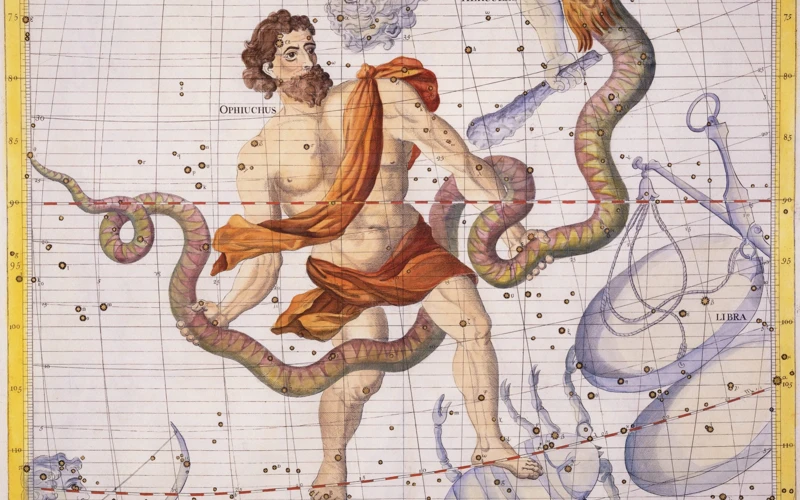
Astrology is an ancient practice that seeks to interpret the influence of celestial bodies on human behavior and events. Its foundations lie in the belief that there is a correlation between the positions and movements of the planets, stars, and other celestial bodies, and the patterns and experiences on Earth. Astrologers analyze these celestial phenomena, map them onto specific zodiac signs and houses, and interpret their meanings based on established principles and symbolism. Astrology draws upon various traditions and systems, including Western astrology, Vedic astrology, and Chinese astrology, each with its own unique approach and cultural significance.
Planetary alignments play a crucial role in astrological interpretations. These alignments occur when two or more planets appear in close proximity to each other in the sky, forming specific angles or geometric relationships. Such alignments create energetic exchanges between the planets involved, which astrologers believe can impact human consciousness and behavior. The positions of the planets at the time of an individual’s birth, known as the natal chart, are considered especially significant as they provide insights into one’s personality traits, strengths, and potential challenges. Additionally, planetary alignments occurring in the present moment, known as transits, are analyzed to understand the current energies and influences at play. By studying the role of planetary alignments, astrologers gain a deeper understanding of the cosmic forces shaping our lives./roman-pantheon-guide/
1. Astrology and Its Foundations
Astrology has deep roots in human history, with its foundations stretching back thousands of years. It encompasses a wide range of belief systems, including ancient Babylonian, Egyptian, and Greek practices, among others. One of the key principles of astrology is the concept of the zodiac, which divides the sky into twelve equal segments, each represented by a zodiac sign. These signs, based on the movement of the Sun against the backdrop of stars, hold symbolic meanings and are associated with specific personality traits and characteristics. Astrologers also consider the significance of the planets in the solar system, such as the Sun, Moon, Mercury, Venus, Mars, Jupiter, Saturn, Uranus, Neptune, and Pluto. Each planet is believed to emanate its own energy and influence, which is further shaped by its placement in the zodiac. By understanding the foundations of astrology and its connection to the zodiac signs and planetary influences, astrologers can provide insights into individual personalities, compatibility, and life events. For more information on the significance of zodiac signs in astrology, check out /significance-zodiac-signs-astrology/.
2. Role of Planetary Alignments
Planetary alignments play a pivotal role in astrological interpretations, shaping the energies and influences that are experienced by individuals and the collective. Understanding the role of these alignments is crucial in interpreting astrological charts and predictions accurately.
1. Alignment Patterns: Planetary alignments occur in various patterns, such as conjunctions, oppositions, trines, squares, and aspects. Each pattern carries its own unique energy and impact on interpretations. Conjunctions, for example, happen when two planets are in close proximity, amplifying their energies and creating a powerful influence. Oppositions occur when planets are directly across from each other, representing a balancing dynamic. Trines, meanwhile, form when planets are approximately 120 degrees apart, fostering harmonious flow and ease. Squares, however, create tension and challenges as planets are at 90-degree angles, symbolizing potential conflicts or obstacles. Aspects, which refer to the angular relationships between planets, modify and refine the energy of the alignment.
2. Planetary Energies: Each planet possesses distinct qualities and energies, and their alignment interactions further enhance or temper these characteristics. For example, the alignment of Mercury, the planet of communication and intellect, with expansive Jupiter can bring about heightened curiosity, idea generation, and intellectual growth. Similarly, when aggressive Mars aligns with transformative Pluto, there is a surge of intense, power-driven energy, potentially leading to power struggles and transformational shifts. These planetary energies combined with the alignment patterns mold the interpretations and predictions made by astrologers.
Understanding the role of planetary alignments enables astrologers to discern the complex interplay of energies and deliver more accurate and meaningful interpretations for individuals seeking insight into their lives. By recognizing the patterns and energies at play, astrologers can offer guidance and help individuals navigate life’s challenges and opportunities./celtic-myth-creatures/
Impact of Planetary Alignments on Interpretations
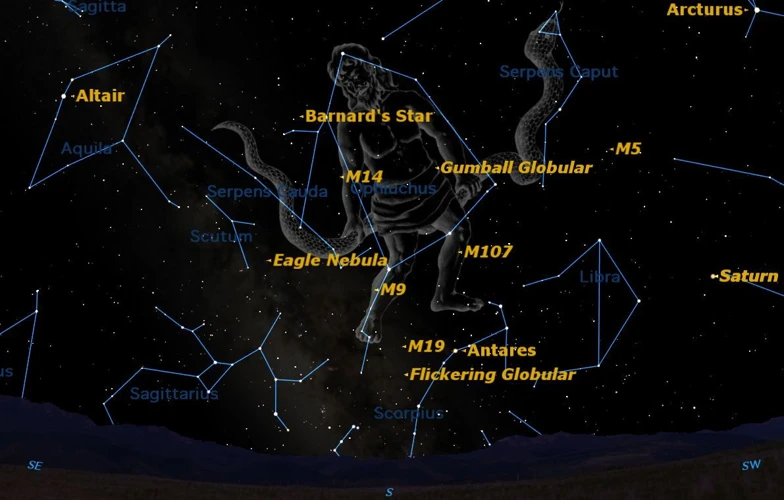
Planetary alignments have a significant impact on astrological interpretations, as they shape the energies and dynamics at play in a person’s life. Different types of planetary alignments produce distinct effects, which astrologers analyze to gain deeper insights into an individual’s experiences and personality traits.
1. Conjunctions: A conjunction occurs when two or more planets align at the same degree in the zodiac. This alignment intensifies the energies of the involved planets, working together to amplify their impact. Conjunctions can signify a concentrated focus and heightened activity in specific areas of life, bringing forth powerful opportunities or challenges.
2. Oppositions: Oppositions occur when two planets are 180 degrees apart in the zodiac. This alignment symbolizes a polarity, representing a balancing act between opposing forces. Oppositions can create tensions and inner conflicts, as well as opportunities for growth and integration.
3. Trines: Trines form when two planets are 120 degrees apart. This alignment represents a harmonious flow of energy between planets, facilitating easy and effortless expression of their qualities. Trines often indicate opportunities, talents, and a sense of ease and support in various areas of life.
4. Squares: Squares occur when two planets are 90 degrees apart in the zodiac. This alignment creates tension and challenge, representing conflict or obstacles that need to be overcome. Squares may bring about frustration, but they also serve as catalysts for growth and transformation.
5. Aspects: Aspects refer to the specific angles or relationships that planets form with each other. Each aspect has its own unique influence on the interpretation of a chart. Some common aspects include sextiles (60 degrees apart), which signify opportunities and connections, and quincunxes (150 degrees apart), which represent adjustments and shifts.
Astrologers carefully analyze these planetary alignments and aspects to gain a more nuanced understanding of an individual’s story, strengths, challenges, and potential paths for growth and fulfillment. By considering the impact of planetary alignments on interpretations, astrologers can provide valuable guidance and insights to individuals seeking to navigate their lives with greater awareness and understanding.
1. Conjunctions and Intensified Energy
Conjunctions are a powerful aspect in astrology that occur when two or more planets align closely together in the same zodiac sign. This alignment intensifies the energy of the involved planets, creating a potent and concentrated influence. When two planets are in conjunction, their energies merge, amplifying each other’s effects. This can result in heightened emotions, increased motivation, and a strong focus on the qualities represented by the planets involved. The specific nature of the conjunction depends on the planets involved. For example, a conjunction between Mars and Venus may bring passion and desire, while a conjunction between Mercury and Uranus may enhance innovative thinking and intellectual insights. Astrologers analyze conjunctions to understand how different planetary energies interact and how they may impact an individual’s life or the collective energy of a period. Conjunctions are considered key moments for growth, transformation, and initiating new endeavors, as they offer a surge of concentrated energy and potential./significance-zodiac-signs-astrology/
2. Oppositions and Balancing Forces
Oppositions in astrology occur when two planets are across from each other in the sky, forming a 180-degree angle. This alignment creates a tension between the energies represented by the planets involved. Oppositions act as balancing forces, highlighting the polarities and contrasts in our lives. For example, the opposition between the Sun and the Moon represents the balance between our conscious ego (Sun) and our emotional needs (Moon). This alignment brings awareness to the need for integration and finding harmony between these two aspects of ourselves. Similarly, other oppositions, such as Mercury opposing Uranus, highlight the tension between logic and innovation. It urges us to strike a balance between traditional thinking (Mercury) and revolutionary ideas (Uranus). Oppositions provide opportunities for growth and self-awareness by encouraging us to find a middle ground and harmonize conflicting energies within ourselves and our relationships. It is through this balancing of opposing forces that we can find greater inner equilibrium and navigate life’s challenges more effectively.
3. Trines and Harmonious Flow
Trines are astrological aspects that represent a harmonious flow of energy between two planets. When two planets form a trine aspect, they are approximately 120 degrees apart in the zodiac. This alignment creates a sense of ease, cooperation, and positive influence. Trines are considered beneficial aspects, as they bring forth opportunities, creativity, and a sense of natural talent in the areas of life ruled by the planets involved.
In astrological interpretations, trines signify a harmonious blending of energies, allowing for smooth and effortless expression. They encourage cooperation, balance, and open pathways for growth and success. When a trine aspect is present in a birth chart or transit, it indicates a supportive and favorable environment for the individual. It represents innate abilities and areas where things tend to flow easily. The energy of the planets involved in a trine aspect integrates seamlessly, enabling the individual to tap into their talents and achieve their goals with relative ease.
However, it’s important to note that while trines bring positive energy, they can also lead to complacency if not consciously utilized. The ease provided by trines may cause individuals to rely too heavily on their natural abilities and become hesitant to push beyond their comfort zones. To make the most of trine energies, it is essential to remain proactive, engage in personal growth, and continue to develop one’s skills and talents. By doing so, individuals can fully harness the harmonious flow of energy that trines offer and manifest their desires with grace and success.
4. Squares and Challenges
In astrology, squares are considered challenging aspects that occur between two planets or points in a natal chart or during a transit. When two celestial bodies form a square aspect, they create a dynamic tension, symbolizing conflicts, obstacles, and internal struggles. The square aspect forms a 90-degree angle, which signifies a clash of energies and a need for resolution. It represents a powerful force that can fuel personal growth and transformation.
Individuals with prominent square aspects in their natal chart often face internal conflicts and external challenges. These aspects highlight areas of life where they may encounter difficulties and obstacles. The tensions created by squares can manifest as emotional and psychological confrontations, pushing individuals to confront their fears and limitations. While squares can be uncomfortable, they also provide opportunities for growth and transformation.
Astrologers analyze the specific planets or points involved in the square to gain insights into the challenges faced. For example, a square between Mars and Saturn may indicate frustration, hard work, and obstacles in achieving goals. On the other hand, a square between Venus and Pluto may indicate power struggles and intense emotional experiences in relationships.
To navigate the challenges of a square aspect, individuals are encouraged to embrace the lessons it presents. By recognizing the areas of tension and working on self-improvement, individuals can harness the transformative potential of square aspects. Awareness, perseverance, and embracing resilience are key to overcoming the challenges and using this aspect as a catalyst for personal growth and self-discovery.
5. Aspects and Modifying Energies
One of the key factors in understanding how planetary alignments affect astrological interpretations is the concept of aspects. Aspects refer to the angular relationships between planets in a natal chart or during transits. These aspects influence the way planetary energies interact and modify each other. Astrologers analyze aspects to gain insights into the nuances of a person’s personality or the energies at play in a specific situation.
There are various types of aspects that astrologers consider, each with its own unique qualities. Some of the most common aspects include conjunctions, oppositions, trines, and squares.
– Conjunctions occur when two or more planets are positioned closely together, within a specific degree range. This alignment intensifies and fuses the energies of the planets involved, creating a potent and focused energy. Conjunctions can signify a powerful concentration of traits or events related to the planets in question, emphasizing their combined influence.
– Oppositions occur when two planets are directly across from each other in the Zodiac, creating a 180-degree angle. This aspect represents a balancing and opposing force, highlighting polarities and potential conflicts. Oppositions can signify the need to find harmony and achieve a balance between the energies represented by the planets involved.
– Trines occur when two planets are approximately 120 degrees apart. This aspect represents a harmonious flow of energy, facilitating ease and cooperation between the planets involved. Trines often indicate opportunities, talents, and favorable circumstances in the areas of life governed by the planets.
– Squares occur when two planets are approximately 90 degrees apart. This aspect represents a dynamic and challenging energy, creating tension and conflict. Squares often indicate areas of growth and development, where obstacles need to be overcome. They can also signify the need to take action and make changes in areas of life governed by the planets.
Other aspects, such as sextiles, quincunxes, and semi-squares, further refine the interactions between planets and provide additional insights into how their energies manifest. Astrologers analyze these aspects in conjunction with other factors in a natal chart or during transits to determine the overall energy dynamics and potential outcomes.
Understanding the various aspects and their modifying energies is essential for astrologers to provide accurate and insightful interpretations. By analyzing the interactions between planets, astrologers can gain a deeper understanding of the complexities and nuances of a person’s astrology chart or the influences at play during specific planetary alignments.
Case Studies: Examples of Planetary Alignments
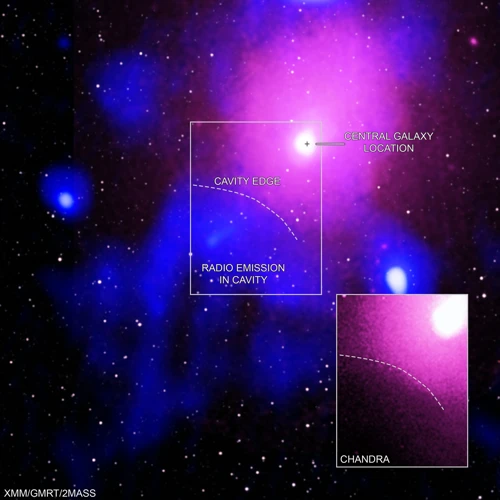
Case studies provide practical examples of how planetary alignments can influence astrological interpretations. These examples illustrate the impact of specific alignments on individuals and global events, highlighting the diversity and nuances within astrology. Here are three compelling case studies:
1. Mercury Retrograde and Communication Challenges: The retrograde motion of Mercury, where it appears to move backwards in the sky, is a well-known alignment in astrology. During Mercury retrograde periods, miscommunications, technological glitches, and delays are commonly experienced. This alignment prompts us to review and reassess our communication methods and encourages us to slow down and be more mindful in our interactions.
2. Jupiter-Saturn Conjunction and Transformative Shifts: When Jupiter and Saturn align in a conjunction, it signifies significant societal and cultural shifts. These alignments often coincide with the beginning of new eras, major political and economic changes, and shifts in collective consciousness. The most recent Jupiter-Saturn conjunction in December 2020 marked an important transition, signaling the start of a new era focused on restructuring, innovation, and social justice.
3. Mars-Pluto Square and Power Struggles: The square aspect between Mars and Pluto, where the two planets form a 90-degree angle, can bring intense power struggles and conflicts. This alignment can trigger confrontations, aggression, and a desire for control. It is a time when transformation and personal empowerment can be achieved by acknowledging and resolving underlying power dynamics.
By examining these case studies, we can see how specific planetary alignments correlate with distinct themes and experiences. Astrologers use these examples as reference points for understanding the impact of alignments in individual charts and predicting broader societal trends. These case studies emphasize the dynamic and ever-evolving nature of astrology and how planetary alignments shape our interpretations./significance-zodiac-signs-astrology/
1. Mercury Retrograde and Communication Challenges
Mercury retrograde is a planetary phenomenon in astrology that occurs when it appears as though the planet Mercury is moving backward in its orbit. Although Mercury doesn’t actually reverse its course, its apparent retrograde motion has a significant impact on communication and information flow. During Mercury retrograde periods, which happen several times a year, misunderstandings, delays, and technological glitches become more prevalent. This phenomenon is believed to disrupt the smooth and efficient flow of communication, leading to miscommunications, missed appointments, and even conflicts. It’s a time when people may experience difficulties in expressing themselves clearly and may have to be extra cautious when making important decisions or signing contracts. While Mercury retrograde may seem challenging, it also offers an opportunity for reflection, review, and introspection. It’s a time to slow down and reconsider our actions, allowing us to gain valuable insights and make necessary adjustments. By understanding the impact of Mercury retrograde on communication, we can navigate these periods with greater awareness and take proactive measures to minimize potential challenges./roman-pantheon-guide/
2. Jupiter-Saturn Conjunction and Transformative Shifts
The Jupiter-Saturn conjunction is an astrological event that occurs when the two largest planets in our solar system, Jupiter and Saturn, align in the same zodiac sign. This conjunction is highly significant and is often associated with transformative shifts and major changes on both personal and collective levels. Jupiter represents expansion, growth, and optimism, while Saturn symbolizes restriction, discipline, and responsibility.
When these two planets come together in a conjunction, their energies combine, creating a powerful and potent force. This alignment heralds a period of significant transformation and the potential for long-lasting change. It is known to bring about shifts in societal structures, political systems, and even economic trends. People often experience a sense of purpose and direction during this time, as well as increased motivation to pursue their goals and ambitions.
The Jupiter-Saturn conjunction occurs approximately once every 20 years, with each conjunction having a distinct theme and impact. Historical events such as the Renaissance, the Industrial Revolution, and the dawn of new technological eras have been associated with these powerful alignments. Astrologers analyze the specific zodiac sign in which the conjunction occurs, as well as the aspects it forms with other planets, to gain a deeper understanding of its potential effects.
During a Jupiter-Saturn conjunction, individuals may feel a strong desire for personal growth and development. It is a time to reassess goals, make long-term plans, and take calculated risks. This alignment encourages us to break free from old patterns and embrace new opportunities. It is a period of great potential and manifestation, where hard work and dedication can lead to lasting success.
The Jupiter-Saturn conjunction represents a time of transformative shifts and the potential for significant changes. It is a celestial dance between the energies of expansion and restriction, offering us the opportunity to grow, evolve, and create a better future. Whether on a personal level or a global scale, this alignment invites us to embrace change and embark on a journey of self-discovery and achievement.
3. Mars-Pluto Square and Power Struggles
The Mars-Pluto square is a planetary alignment that holds significant influence over astrological interpretations. When Mars and Pluto form a square aspect, it signifies a clash between the energetic, assertive nature of Mars and the transformational, power-driven energy of Pluto. This alignment creates a sense of tension and conflict, particularly in matters related to personal power, control, and ambition. Individuals experiencing this alignment often find themselves engaged in power struggles, whether in their personal relationships or professional endeavors. The Mars-Pluto square can fuel a desire for dominance and the need to assert oneself forcefully. However, it is essential to harness this energy consciously and responsibly, as it can easily lead to manipulation, aggression, and destructive behavior. Astrologers often advise individuals with this alignment to channel the intense energy into constructive outlets, such as pursuing personal transformation, advocating for social justice, or engaging in physical activities that allow for the release of pent-up energy. It is crucial to approach the Mars-Pluto square with self-awareness and a mindful approach to prevent conflicts and negative expressions of power. Understanding the dynamics of this alignment can provide valuable insights into managing power struggles and promoting personal growth.
Working with Planetary Alignments
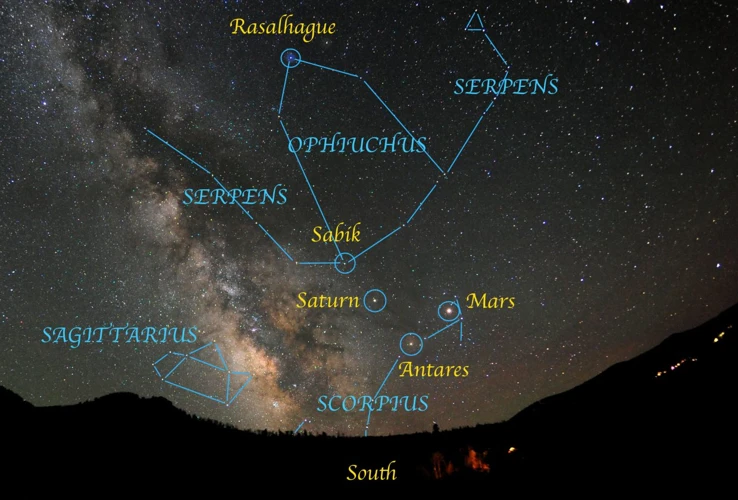
Working with planetary alignments in astrology involves observation, analysis, and adaptation to the cosmic energies at play. Astrologers closely monitor the current planetary positions and alignments to gain insights into the prevailing energies and their potential influence on individuals and events. They may use tools such as ephemeris and online astrology software to track these alignments. By observing the alignments, astrologers can identify major transits and aspects that may have a significant impact on individuals or society as a whole.
Once the planetary alignments are identified, astrologers must adapt their interpretations accordingly. Each planetary alignment carries its own unique energy and symbolism, which can modify the overall interpretation of a chart or forecast. For example, during a Mercury retrograde, communication and technology may become disrupted, leading to misunderstandings and delays. Understanding this planetary alignment allows astrologers to advise individuals to practice patience, double-check information, and avoid making critical decisions during this time.
Adapting interpretations also involves considering the overall context of the individual’s birth chart or the current situation being analyzed. Planetary alignments can interact with natal placements or other transiting planets, creating a complex interplay of energies. It is crucial for astrologers to analyze these interactions and consider the broader astrological picture. By doing so, they can provide a more accurate and nuanced interpretation.
Working with planetary alignments requires a deep understanding of astrology principles, symbolism, and the specific effects of different planetary combinations. It is through this meticulous observation and adaptation that astrologers can provide valuable insights and guidance to individuals seeking to navigate the cosmic currents in their lives and make informed decisions.
1. Observing Current Alignments
Observing current planetary alignments is a fundamental step in astrological practice. By keeping track of the positions and movements of the planets in the present moment, astrologers can gain insights into the energies at play and their potential effects on individuals and the collective. Here are some key points to consider when observing current alignments:
1. **Identify the Planetary Positions:** Start by noting the positions of the planets in the zodiac signs they currently occupy. This information can be found in astrological calendars or through online resources. Pay attention to both the outer planets (such as Jupiter, Saturn, Uranus, Neptune, and Pluto) and the inner planets (Mercury, Venus, Mars).
2. **Take Note of Aspects:** Aspects refer to the geometric relationships formed between planets. Common aspects include conjunctions, oppositions, trines, squares, and sextiles. Pay attention to which planets are forming aspects with each other, as this will give clues about the specific energies in play.
3. **Consider the Significance of Retrogrades:** Retrograde motion occurs when a planet appears to move backward in the sky. Retrogrades are significant in astrological interpretations as they intensify the energies associated with the retrograding planet. Note if any planets are currently in retrograde and consider their impact on the overall energy landscape.
4. **Analyze Transiting Planets:** Take into account the transiting planets’ positions in relation to an individual’s natal chart. This analysis can provide insights into how the current planetary alignments may interact with an individual’s unique birth chart.
5. **Keep a Record:** Maintaining a record of the planetary alignments observed can help identify patterns and make connections between celestial events and personal experiences. This record can also serve as a reference for future observations and interpretations.
Observing current planetary alignments is an ongoing practice in astrology, allowing astrologers to stay attuned to the cosmic forces at play and provide valuable insights into individuals’ lives and the collective experience.
2. Adapting Interpretations
Adapting interpretations is an essential skill for astrologers to navigate the complexities of planetary alignments and provide accurate readings. As planetary alignments constantly shift and change, it is crucial to adapt astrological interpretations to reflect these dynamic energies. One way astrologers adapt interpretations is by considering the specific houses in a natal chart that are affected by the planetary alignment. Each house represents different areas of life, such as relationships, career, and health. By analyzing which houses are involved, astrologers can tailor their interpretations to focus on the specific aspects of life that are influenced by the alignment. Another aspect of adapting interpretations is considering the overall astrological context. This involves looking at other planetary aspects, such as trines, squares, and oppositions, to gain a holistic understanding of the energies at play. For example, a challenging square aspect between two planets might indicate a period of tension and conflict, but if there is also a supportive trine from another planet, it could signify hidden opportunities for growth and transformation. Astrologers also need to take into account the individual’s unique birth chart and personal history. Every person has their own unique combination of planetary positions and aspects, which can modify the general interpretation of a planetary alignment. By considering these factors, astrologers can adapt their interpretations to provide more accurate and nuanced insights into an individual’s life experiences and potentials. It is through this adaptability and flexibility in interpretation that astrologers can truly harness the power of planetary alignments to provide meaningful guidance and insights to their clients.
Conclusion

In conclusion, planetary alignments hold immense significance in astrological interpretations. They act as dynamic cosmic influences that shape our experiences, emotions, and even our interactions with others. By understanding the effects of various alignments, such as conjunctions, oppositions, trines, squares, and aspects, astrologers can provide insights into the intensification of energy, balancing forces, harmonious flow, challenges, and modifying energies in our lives. Case studies, such as the impact of Mercury retrograde on communication, the transformative shifts brought about by the Jupiter-Saturn conjunction, and the power struggles indicated by the Mars-Pluto square, further illustrate the role of planetary alignments in astrological interpretations. It is important for individuals to observe current planetary alignments and adapt their interpretations accordingly, as these alignments provide valuable insights into the current energies at play. As we navigate this cosmic journey, embracing and understanding the influence of planetary alignments can deepen our self-awareness and help us navigate the vast tapestry of life with greater clarity and purpose.
Frequently Asked Questions

1. What is the difference between astrology and astronomy?
Astronomy is the scientific study of celestial objects, their movements, and their physical properties. On the other hand, astrology is a belief system that interprets the influence of celestial bodies on human behavior and events.
2. Can astrology predict the future?
Astrology offers insights and potentials, but it does not provide definite predictions. It helps us understand the energies at play and the possible paths we may encounter, allowing us to make informed decisions.
3. Are all astrologers the same?
No, there are various traditions and approaches to astrology. Different astrologers may focus on different techniques, such as Vedic astrology, Western astrology, or Chinese astrology, which can lead to variations in interpretations and methods.
4. How accurate is astrology?
The accuracy of astrology varies from person to person and situation to situation. It is important to approach astrology with an open mind and use it as a tool for self-reflection and personal growth.
5. Can astrology determine compatibility in relationships?
Astrology can provide insights into the dynamics between two individuals based on their astrological charts. However, it is crucial to remember that astrology is just one factor among many that contribute to relationships.
6. What are the zodiac signs?
The zodiac signs are twelve equal divisions along the ecliptic, representing different personality traits and characteristics. They are Aries, Taurus, Gemini, Cancer, Leo, Virgo, Libra, Scorpio, Sagittarius, Capricorn, Aquarius, and Pisces.
7. How do planetary alignments affect us?
Planetary alignments create energetic exchanges that can influence our consciousness and behavior. They can intensify certain energies, bring balance and harmony, create challenges, or modify the overall flow of energy.
8. What is the significance of the Sun and Moon in astrology?
The Sun represents our core essence, vitality, and ego, while the Moon symbolizes our emotions, instincts, and subconscious mind. Both the Sun and Moon play significant roles in astrology and provide insights into different aspects of our personalities.
9. Can astrology help in career choices?
Astrology can offer insights into one’s strengths, talents, and potential challenges, which can be beneficial when making career choices. It can guide individuals in aligning their passions and skills with suitable career paths.
10. Is astrology a science?
Astrology is not considered a science in the traditional sense, as it does not adhere to the scientific method. However, it carries historical and cultural significance and continues to provide guidance and inspiration to many individuals.
References
- How to Find and Interpret Aspects in Astrology
- What does planetary alignment mean in astrology?
- How do the planets affect us in astrology?
Frequently Asked Questions

1. Can planetary alignments affect astrological interpretations?
Yes, planetary alignments play a significant role in astrological interpretations. They influence the energy and dynamics of a chart, shaping the characteristics and potentials of an individual’s life.
2. What are the foundations of astrology?
Astrology is based on the belief that celestial bodies, including planets, influence human behavior and personality traits. It combines ancient symbolism, mathematics, and observation to create a system of interpretation.
3. How do planetary alignments impact astrological interpretations?
Planetary alignments create specific angles and relationships between planets, which influence the energy flow and interactions within a birth chart. These alignments enhance or modify certain qualities and themes in a person’s life.
4. What happens during a conjunction and how does it affect interpretations?
A conjunction occurs when two planets align in the same zodiac sign. This intensifies the energy, blending the traits of both planets. It can signify a potent combination of influences and potential opportunities for growth.
5. How does opposition between planets impact astrological interpretations?
An opposition happens when two planets are directly across from each other in the zodiac. It creates a balancing force, highlighting the need for integration and cooperation. The opposition may indicate a dynamic tension or conflict in one’s life.
6. What is the significance of trines in astrology?
Trines occur when planets are approximately 120 degrees apart, creating a harmonious flow of energy. These alignments often indicate ease, favorable circumstances, and opportunities that arise with little effort.
7. How do squares influence astrological interpretations?
A square occurs when planets are approximately 90 degrees apart, creating a challenging aspect. It signifies tension, obstacles, and the need for growth. Squares can prompt initiations and drive individuals toward personal development.
8. What are aspects and how do they modify astrological interpretations?
Aspects represent the angles between planets in a birth chart. They modify the energy and interactions between planets, shaping the overall interpretation. Different aspects bring their unique qualities and influences to the chart.
9. How does Mercury retrograde impact communication?
Mercury retrograde is a well-known planetary alignment that can disrupt communication, technology, and travel. It may cause misunderstandings, delays, and glitches in these areas, requiring individuals to exercise patience and clarity.
10. What transformative shifts can be expected during a Jupiter-Saturn conjunction?
A Jupiter-Saturn conjunction is a significant alignment that occurs approximately every 20 years. It signifies a time of transformative shifts and new beginnings, often associated with socio-political changes and personal growth.

